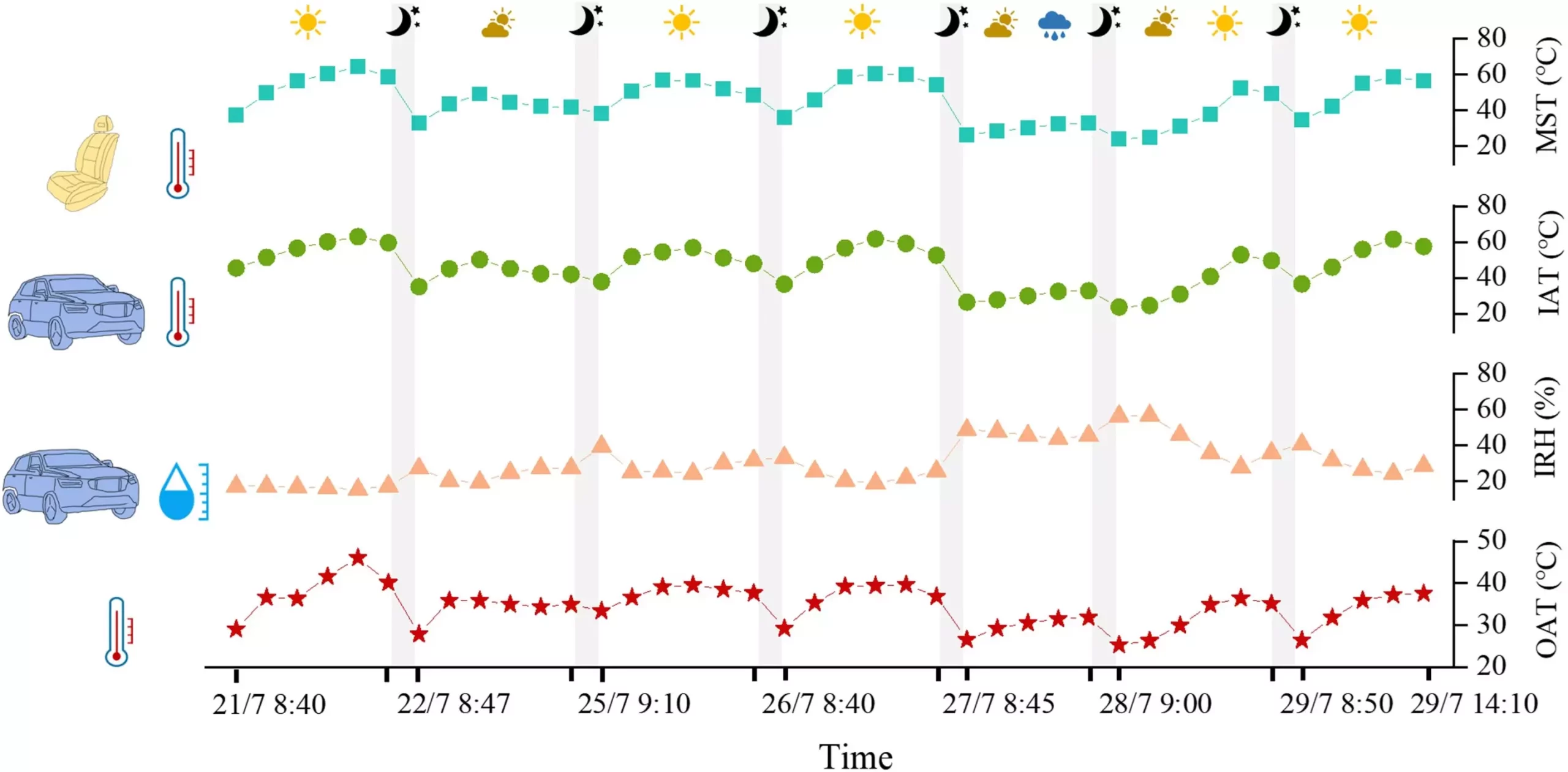For many, the scent of a new car is more than just a pleasant fragrance—it’s an intoxicating experience that signifies luxury, freshness, and the thrill of new beginnings. However, this endearing olfactory signature comes with a darker side. The “new car smell” is largely due to an array of volatile organic compounds (VOCs) that are emitted from the interior materials of freshly manufactured vehicles. These compounds, while evoking feelings of joy, may end up harboring significant health risks that car buyers should not overlook.
The Science Behind VOC Emissions
A recent study led by Jianyin Xiong and Shaodan Huang sheds light on this critical issue. Conducted under extreme summer conditions—temperatures soaring between 25.3 °C to 46.1 °C (77.5 °F to 115 °F)—the research identified alarming levels of harmful VOCs, including formaldehyde and its ilk. Notably, formaldehyde, often lurking in the background of VOC discussions, has been documented to contribute to various health problems, such as respiratory issues and neurological discomforts.
The findings reveal that in some new models, formaldehyde levels exceeded the Chinese safety threshold of 100 µg/m³, at times reaching over 200 µg/m³. Similarly, acetaldehyde—a compound linked to several adverse health effects—was detected at levels significantly above its national limit. This prompts an urgent question for consumers: Is the short-lived joy of “new car smell” worth the potential long-term risks?
Climate Change and Its Impact on Indoor Air Quality
It’s essential to connect the dots between external environmental factors and how they interact with our health. With climate change exacerbating summer heat, the implications for in-car air quality are concerning. The study emphasizes that surface temperatures inside car cabins play a pivotal role in VOC concentration, indicating that rising outdoor temperatures could lead to increasingly hazardous conditions within our vehicles. This correlation illustrates the broader narrative of climate change impacting not only our environment but also our personal health in often unseen ways.
Technological Solutions on the Horizon
In response to these findings, the researchers developed a machine learning model that identifies material surface temperature as a critical factor influencing VOC levels. This presents an exciting prospect: integrating such predictive technologies into the next generation of smart vehicles. Imagine cars equipped with systems that could precisely assess air quality in real-time—modulating interior conditions for optimal health and comfort. As consumers become more environmentally conscious, innovations that prioritize well-being will likely resonate well in the market.
Taking Action: What Consumers Can Do
Awareness is the first step. Car buyers should investigate manufacturers’ claims regarding materials used in creating their vehicles and be informed about safety standards. Avoiding any car that still boasts the “new car smell” might be a prudent decision. Further, ensuring proper ventilation and using air purification systems when necessary can mitigate some of the risks associated with VOC exposure.
In a world increasingly driven by consumer choice, the power lies in the hands of buyers to demand greater transparency and healthier options from automakers, contributing to a greener future while safeguarding their health.


Leave a Reply